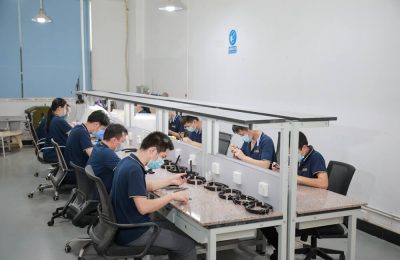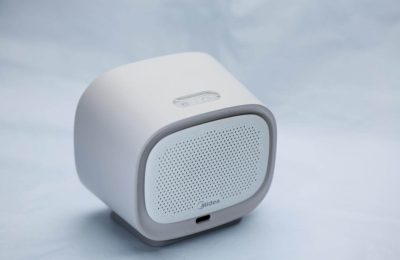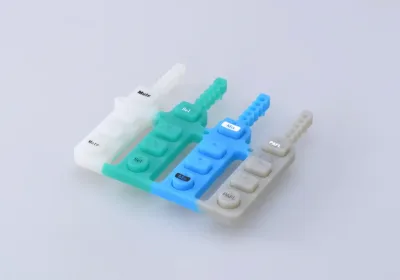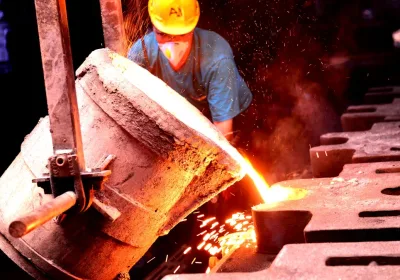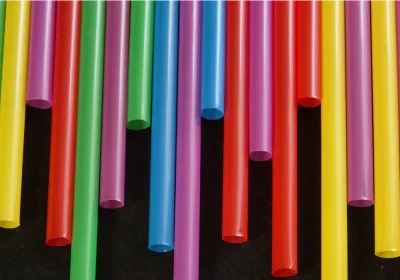
Choosing the right aluminium extruded profiles is key to your project's success. These profiles are very flexible and meet both design and strength needs.
Aluminium extruded profiles are popular in many industries because they are light and strong. Good-quality profiles are tough, resist rust, and look great, lasting a long time.
The rising demand shows their value:
The global market for aluminium extruded profiles has grown steadily since 2019.
Earnings from 2019 to 2024 show they are used more in different fields.
Modern buildings often use aluminium extruded profiles in their designs.
Picking the right aluminium extruded profiles ensures they last, save money, and work well. Making smart choices is important for your project.
Key Takeaways
Picking the right aluminium profile is key for project success. It affects strength, cost, and how well it works.
Aluminium profiles are light but strong, making them great for use in building, cars, and gadgets.
Knowing about aluminium types, like 6061 and 7075, helps you choose the best one for strength and rust resistance.
Think about the shape, size, and design when choosing profiles. Custom designs can work better and fit perfectly.
Budget matters too. Standard profiles are cheaper, but custom ones might save money later by reducing waste.
Make sure profiles are the right size to avoid errors. Accurate sizes are important for safety and good performance.
Pick a trusted supplier with experience and high-quality standards. Their help can make your project better.
Finishes like anodising and powder coating make profiles look good and last longer in different conditions.
Understanding Aluminium Extrusion Basics
What is Aluminium Extrusion?
Aluminium extrusion is a way to shape aluminium. Heated aluminium alloy is pushed through a mould to form a specific shape. Think of squeezing toothpaste from a tube – it works the same way. This process makes many shapes and sizes, from simple to complex. It saves money, works quickly, and wastes little material. The process also makes the aluminium stronger and more durable by creating an even structure. Aluminium extrusions are popular because they are precise, smooth, and easy to work with later.
Several factors affect the extrusion process, like temperature, pressure, and time. For example, faster speeds make the metal hotter and increase pressure. The force needed depends on stress, friction, and the extrusion ratio. Extrusion can be direct (forward) or indirect (backward). It can also be hot or cold, and vertical or horizontal. Each method has its own benefits, depending on what your project needs.
Types of Aluminium Alloys
Common Alloy Series and Their Characteristics
Different aluminium grades have different properties, so choosing the right one is important. Two common types are 6061 and 7075 aluminium alloys. The table below shows how they compare:
Property | 6061 Aluminium Alloy | 7075 Aluminium Alloy |
|---|---|---|
Corrosion Resistance | Better without heat treatment | Can rust with certain chemicals |
Machinability | Easy to cut and shape | Harder to cut, needs more effort |
Weldability | Good for most welding methods | Poor, may crack when welded |
Elongation at Break | 12% | 10% |
Shear Strength | 207 MPa / 31000 psi | 331 MPa / 48000 psi |
Thermal Conductivity | 170 W/m-K | 130 W/m-K |
Electrical Resistivity | Lower, conducts electricity better | Higher, less conductive |
Strength to Weight Ratio | ≈ 102.22 MPa/g/cm³ | ≈ 186.48 MPa/g/cm³ |
Strength, Corrosion Resistance, and Machinability
When picking an aluminium alloy, think about strength, rust resistance, and ease of cutting. For example, 6061 aluminium resists rust well and is easy to shape, making it great for building structures. In contrast, 7075 aluminium is stronger but harder to cut and weld. Knowing these differences helps you pick the best material for your project.
Advantages of Aluminium Extruded Profiles
Lightweight and Durable
Aluminium extruded profiles are light but strong, making them useful in many industries. Their low weight helps reduce the heaviness of structures, which is great for cars and planes. Even though they are light, they are strong enough to last a long time, even in tough conditions.
Versatility in Design and Applications
Aluminium extrusions are very flexible in design. You can make simple or complex shapes to fit your project. They are used in construction, cars, electronics, and more because they are easy to customise and adapt to different needs.
Key Factors for Picking the Right Aluminium Extrusions
Design and Functional Needs
Shape, Size, and Complexity
When choosing aluminium extrusions, shape, size, and design matter. The shape affects how strong and useful it is. For example, I-beams and box shapes hold heavy loads well. Thicker walls make profiles stronger and less likely to bend. If your project needs detailed designs, aluminium profiles can be customised. This ensures they fit perfectly and work as needed.
Working with suppliers early can save time and money. You can adjust designs to match technical needs. Early teamwork also helps recreate old parts accurately, ensuring the final product is consistent.
Strength and Looks
Aluminium extrusions must be strong and look good. They should carry the weight needed without breaking. Things like load type, weather, and length affect the choice. Adding ribs or braces can make them even stronger.
For looks, aluminium profiles are very flexible. They can match your project’s style while staying functional. Finishes and coatings improve their appearance and make them last longer.
Material Features
Strength and Weight Support
The strength of aluminium depends on the alloy, heat treatment, and design. Different grades have different strengths. For instance, T6 aluminium is stronger than T86. Heat treatment makes aluminium tougher and more durable. The shape and thickness of the profile also affect how much weight it can hold. Box shapes are great for carrying heavy loads.
Property | Value |
|---|---|
Yield Strength (T6) | 520 MPa |
Yield Strength (T86) | 360 MPa |
Thermal Conductivity | 88 W/mK |
Rust Resistance and Environment
Rust resistance is important, especially for outdoor projects. Aluminium naturally resists rust because of its oxide layer. Some grades, like 6061, resist rust better than others. For harsh weather or chemical exposure, pick the right grade. Coatings can also protect aluminium, making it last longer in tough conditions.
Cost and Practicality
Staying Within Budget
Your budget affects which aluminium extrusions you pick. Standard profiles cost less and are easy to find. Custom profiles cost more but can save money later by reducing waste. Balancing cost now with future savings is important.
Long-Term Benefits
Good-quality aluminium profiles last a long time. They need less fixing and replacing, saving money over time. Aluminium’s light weight also saves energy in transport, like cars or planes. Choosing durable profiles gives you the best value for your money.
Dimensional Tolerances and Precision
Why Accuracy Matters
Accuracy is very important for aluminium extruded profiles to work well. Even small size mistakes can cause problems. For instance, if a profile is not aligned, it might not fit. This can lead to wasted time, higher costs, or even broken structures. Accurate profiles ensure a good fit and reliable use.
Dimensional tolerances are the allowed size and shape differences. These tolerances make sure the profiles meet your project’s needs. High-precision profiles are crucial in industries like cars and planes. Small errors in these fields can affect safety and performance. By focusing on accuracy, you can avoid expensive fixes and keep your project on track.
Standards and Guidelines
Industry rules explain the tolerances for aluminium extruded profiles. These rules help you know the precision needed for your project. The table below shows common tolerance types and their limits:
Tolerance Type | Precision Level | |
|---|---|---|
Angular Alignment Tolerance | High Precision | ≤ 1/2000 (0.05°) |
Standard Precision | ≤ 1/1000 (0.1°) | |
General Precision | ≤ 1/500 (0.2°) | |
Surface Flatness Tolerance | High Precision | ≤ 0.03 mm/m |
Standard Precision | ≤ 0.05 mm/m | |
General Precision | ≤ 0.1 mm/m | |
Longitudinal Straightness Tolerance | High Precision | ≤ 0.1 mm/m |
Standard Precision | ≤ 0.2 mm/m | |
General Precision | ≤ 0.3 mm/m | |
Cross-Sectional Twist Tolerance | High Precision | ≤ 0.1 mm/m |
Standard Precision | ≤ 0.2 mm/m | |
General Precision | ≤ 0.3 mm/m | |
Profile Shape Deviation Tolerance | High Precision | ±0.1 mm |
Standard Precision | ±0.2 mm | |
General Precision | ±0.3 mm | |
Dimensional Feature Tolerance | High Precision | ±0.1 mm |
Standard Precision | ±0.2 mm | |
General Precision | ±0.3 mm |
When picking an aluminium grade, think about these tolerances. High-precision profiles are best for tight fits and exact sizes. General precision works for simpler projects like basic building tasks.
Surface Finish and Appearance
Coatings and Protection
The surface of aluminium extruded profiles affects how they look and last. Coatings and treatments make them stronger and protect against rust. Popular options include anodising, powder coating, and painting. Anodising adds a protective layer to stop wear and rust. Powder coating gives a tough, coloured finish that shields against weather damage.
Choose a coating based on your project’s needs. Outdoor projects need weatherproof finishes. Indoor projects may focus more on looks than durability. Coatings not only protect but also let you customise the aluminium to match your design.
Looks and Long-Term Use
Aluminium extruded profiles are great for both function and style. A polished or coated surface makes your project look better and more professional. For example, anodised finishes give a modern, shiny look. Powder coatings offer many colours and textures to choose from.
Good surface finishes also make profiles last longer. They protect against rust and wear, keeping the profiles strong and attractive. This lowers maintenance costs and increases the value of your project.
Tip: Think about the environment where your profiles will be used. A strong coating can stop damage and keep your project looking great for years.
Common Types of Aluminium Extruded Profiles

Standard Aluminium Extrusions
Angles, Channels, and Tubes
Standard aluminium extrusions include shapes like angles, channels, and tubes. These shapes are useful in many industries. Angles give strong support for building frames. Channels help guide and hold parts in place. Tubes, which can be round, square, or rectangular, are strong and steady for carrying loads.
These profiles are light and resist rust, making them great for building projects. For example, they are used in doors, windows, and curtain walls. They are also fire-resistant, which makes buildings safer. Since aluminium can be recycled, it supports eco-friendly construction. It also saves money over time because it does not need extra coatings.
Uses in Building and Manufacturing
In building, aluminium extrusions help make strong and efficient structures. They are used in walls, roofs, and inside frames. Their light weight lowers the total weight of buildings, which is helpful for tall buildings. In factories, these profiles are used for machine parts, conveyor belts, and storage shelves.
The need for aluminium extrusions is growing because they are light and flexible. For example, pipes and tubes are very popular in construction. By 2025, they will make up 34.9% of the market. This shows how important these profiles are in today’s industries.
Specialised Aluminium Profiles
Heat Sinks and Electrical Parts
Special aluminium profiles are made for specific jobs, like heat sinks and electrical parts. Aluminium spreads heat well, making it great for cooling electronics. For example, in LED lights, aluminium helps remove heat, keeping the lights working longer.
A study by Advanced Thermal Solutions showed how custom aluminium heat sinks work. By adding copper heat pipes to aluminium, the heat sink worked as well as a bigger copper one. This shows how aluminium can cool things better while being lighter and cheaper.
Car and Aircraft Uses
In cars and planes, special aluminium profiles are key for making light and strong parts. Aluminium extrusions are used in car bodies, frames, and supports. Their light weight improves fuel use, and their strength keeps them safe and lasting.
In planes, aluminium profiles are used in the body, wings, and inside parts. They resist rust and are strong but light, which is perfect for flying. These profiles also lower the plane’s weight, improving how it flies and saving fuel.
Tip: When choosing special aluminium profiles, think about what your project needs. Aluminium can be shaped to solve different problems, like cooling or making strong designs.
Custom vs Standard Aluminium Extrusions
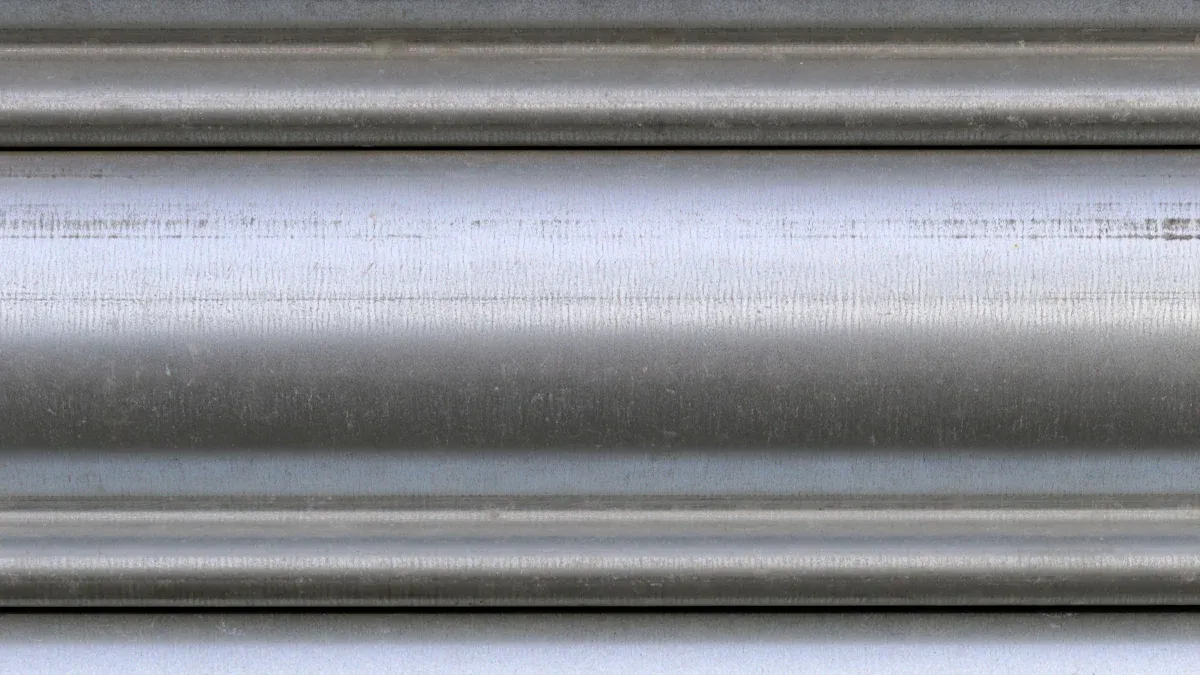
Benefits of Custom Aluminium Profiles
Made for Specific Project Needs
Custom aluminium extrusions are very flexible for special projects. They let you create detailed shapes with exact sizes, ensuring accuracy. This makes them perfect for tasks where standard profiles do not work, like unique designs or special industrial parts. You can design profiles to fit your project perfectly, avoiding any compromises.
Some industries need shapes and features that standard profiles cannot provide. For example, custom aluminium extrusions can include fancy designs for decoration or useful parts like grooves. This level of detail helps your project look good and work well.
Better Performance and Efficiency
Custom aluminium extrusions perform better and work more efficiently. They allow creative designs without limits, helping you find smart solutions. You can adjust the profile for strength, weight, and durability. For example, you can pick from many aluminium types to meet needs like extra strength or resistance to wear.
These profiles also save money during production. Small order sizes make them suitable for all projects, big or small. Working closely with suppliers ensures the final product is just right. The high precision of custom profiles improves quality, making your project more efficient.
When to Choose Standard Aluminium Profiles
Affordable for Simple Projects
Standard aluminium extrusions are great for simple projects. They are pre-made and mass-produced, which lowers costs. This makes them a cheap option for tasks that do not need customisation. For instance, standard shapes like angles, channels, and tubes are common in building and manufacturing because they are cheap and useful.
Using standard profiles saves time and effort. They are ready to use and do not need extra design work. This makes them ideal for projects with tight budgets or quick deadlines.
Easy to Find and Use
Standard aluminium extrusions are easy to get and use right away. Their availability means you can quickly find what you need without waiting. This is helpful for urgent projects or when you need spare parts fast.
These profiles work well in many areas, like building frames or machine parts. Their flexibility and easy access make them a dependable choice for many jobs. While they lack the custom options of tailored profiles, their low cost and convenience often make up for it in simpler projects.
Tip: Think about your project’s needs and budget before choosing. Custom profiles give precision and creativity, while standard ones are cheaper and easier to get.
Tips for Picking the Best Aluminium Extrusion Supplier
Choosing the right aluminium extrusion supplier is very important. A good supplier gives you top-quality extrusions and helpful support. They should be consistent, skilled, and provide great service. Here are some things to think about when selecting a supplier.
Checking Supplier Knowledge
Experience in Aluminium Extrusion
A supplier with lots of experience knows how to make good extrusions. They understand the process, materials, and designs needed for your project. Their knowledge ensures the profiles are strong and work well.
Reports, like those from the IMARC Group, show how experienced suppliers help projects succeed. These reports share useful tips about market trends and supplier performance. Picking a skilled supplier lowers risks and ensures high-quality profiles.
Services They Provide
Suppliers offering many services can make your project easier. Look for ones that help with design, customisation, and finishing touches. These services let you create profiles that fit your needs perfectly.
Suppliers who handle everything, from materials to delivery, save you time. You won’t need to work with many vendors. This teamwork makes your project smoother and more efficient.
Ensuring Good Quality
Certifications and Standards
Certifications show that a supplier cares about quality. Standards like ISO prove their processes meet strict rules. This ensures the extrusions are strong and reliable.
Suppliers with certifications promise safe and durable products. For example, ISO-certified extrusions meet specific safety and quality needs. This is vital for projects needing precise and lasting materials.
Reliable Product Quality
Good suppliers always deliver high-quality extrusions. They ensure the profiles meet your needs every time. Check their past work and customer reviews to see if they are dependable.
To keep quality steady, suppliers use clear performance checks. These checks cover costs, delivery, and service. A transparent system ensures they meet your project’s standards.
Looking at Customer Support
Quick Replies and Clear Communication
A good supplier answers your questions quickly and clearly. This builds trust and keeps you updated on your order. Clear communication helps avoid delays and problems.
Responsive suppliers fix issues fast, keeping your project on track. Their helpful attitude makes working with them easier and stress-free.
Help with Customisation and Design
Sometimes, you need custom profiles for your project. A supplier who helps with design can create profiles that match your needs. Their expertise can improve the look and function of the profiles.
Working with a supplier who understands your ideas ensures better results. They can also suggest ways to save money and improve performance. This support makes your project more successful.
Tip: Always check a supplier’s skills, quality checks, and support before choosing. A good supplier not only provides great extrusions but also helps your project succeed.
Choosing the best aluminium extruded profiles needs careful thought. You must consider design, material features, and costs. A step-by-step plan helps meet your project needs well. The table below shows key points to think about:
Key Factor | What It Means |
|---|---|
Aluminium Alloys | Learn about different alloy types and their strengths. |
Cost vs. Performance | Compare upfront costs with future repair savings. |
Expert Guidance | Get help from experts to make smart choices. |
Picking a trusted supplier makes your project stronger. The global aluminium rod market is growing fast. It is expected to rise from USD 10.5 billion in 2023 to USD 15.9 billion by 2032. This shows how industries like cars and buildings need more aluminium. It also proves why good extrusion choices and supplier help are so important.
Check your project needs carefully and ask experts for advice. Smart choices improve efficiency, strength, and save money in the long run.
FAQ
What are aluminium extruded profiles used for?
Aluminium extruded profiles are used in building, cars, planes, and electronics. They act as frames, heat sinks, supports, and decorative parts. Their flexibility makes them useful for both practical and stylish purposes.
How do I choose the right aluminium alloy for my project?
Think about strength, rust resistance, and ease of shaping. For example, 6061 alloy is great for general use because it resists rust. On the other hand, 7075 alloy is stronger and better for tough jobs. Pick the alloy that fits your project’s needs.
Are custom aluminium extrusions worth the cost?
Custom extrusions are made for special designs or tasks. They work better and waste less material. Even though they cost more at first, they save money later by lasting longer and working more efficiently.
Can aluminium extrusions be recycled?
Yes, aluminium extrusions can be recycled completely. Recycling saves energy and helps the environment. This makes aluminium a good choice for eco-friendly projects.
What surface finishes are available for aluminium extrusions?
Popular finishes include anodising, powder coating, and painting. Anodising protects the surface, powder coating adds a strong coloured layer, and painting allows custom designs. Choose a finish based on how it looks and where it will be used.
How do I ensure dimensional accuracy in aluminium extrusions?
Choose a supplier who follows strict rules and makes precise products. Check their size limits and ask for samples to confirm accuracy. Correct dimensions make sure the profiles fit and work properly.
What factors affect the cost of aluminium extrusions?
The price depends on the alloy, shape, finish, and order size. Standard profiles are cheaper, while custom shapes and special finishes cost more. Balance the price with how much value it adds over time.
How do I find a reliable aluminium extrusion supplier?
Find suppliers with experience, good reviews, and certifications. Check their services, quality checks, and how quickly they respond. A good supplier gives you quality products and smooth project handling.
Tip: Always explain your project needs clearly to the supplier for the best results.
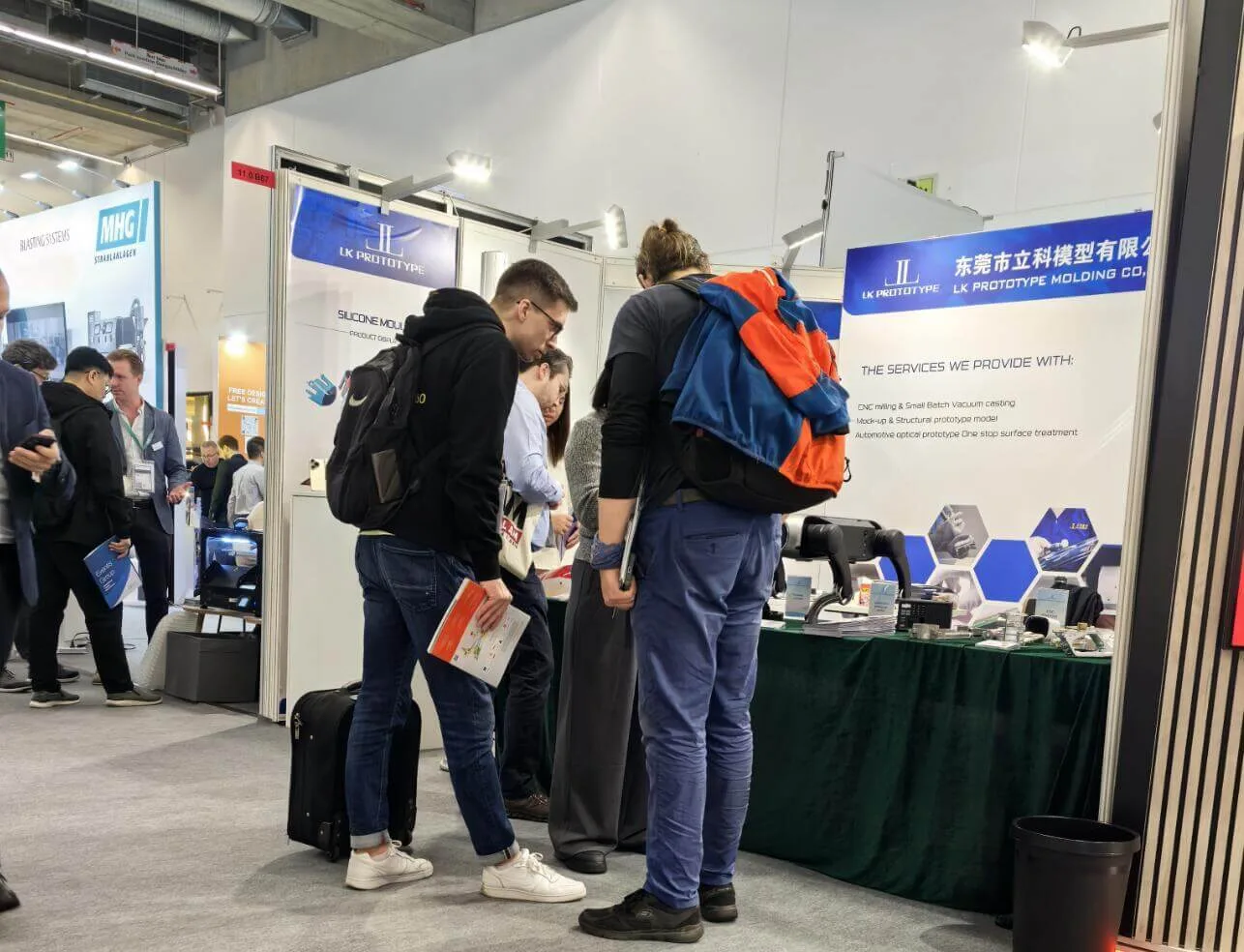
Start your project with LKprototype
LKprototype company simplifies procurement for custom manufacturing, Suitable for making your products or prototypes with a variety of materials, such as metal or plastic, silicone rubber, from 3D Printing to CNC Machined Parts and Vacuum Casting , with a focus on speed and efficiency. Our platform provides instant quotes. With LKprototype, You can connect with the team to communicate your project to ensure quality and on-time delivery.
Start with an instant quote and experience how our technology and expertise can make custom part procurement faster and easier.
 LKprototype
LKprototype
